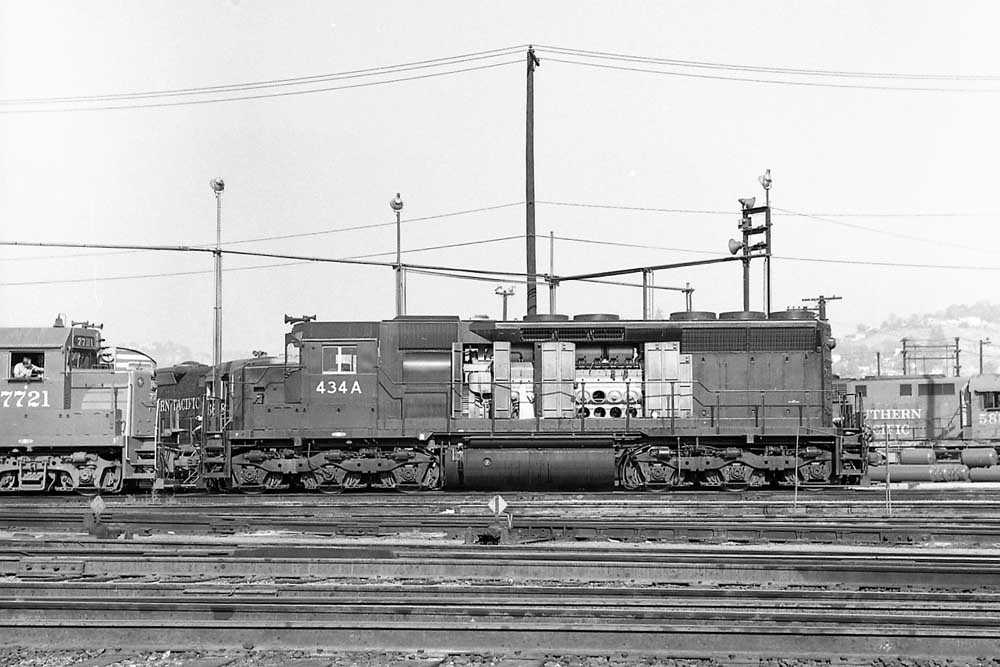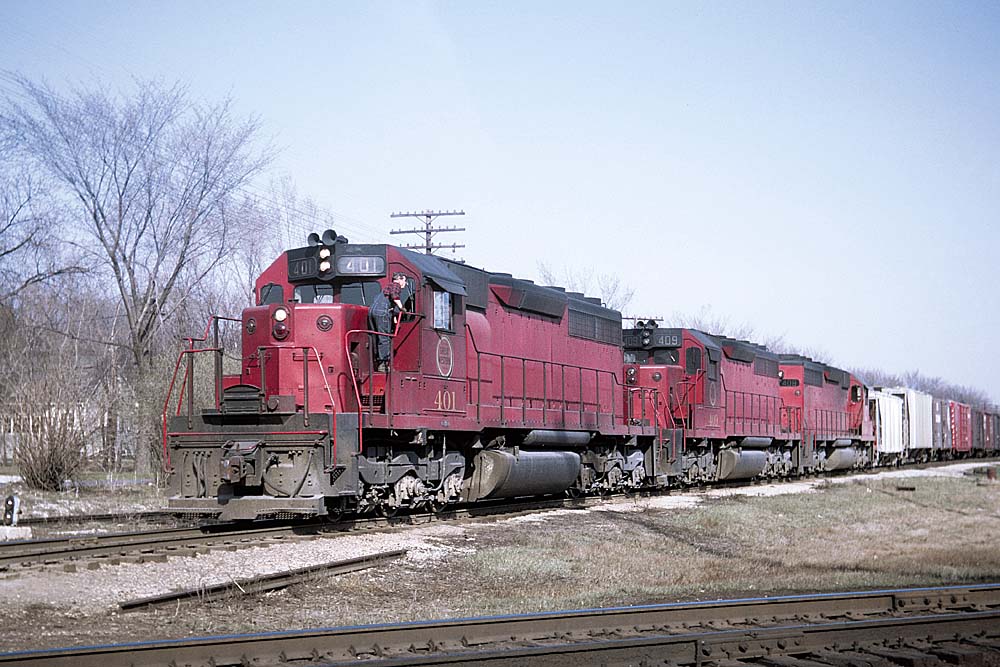For railroading, the EMD SD40, was a stellar standout.

Between January 1966 and August 1972, more than 1,250 units were built, with orders coming from most major railroads. Through upgrades and rebuildings, many are still working today, some still on mainline trains, others rebuilt and earning their keep on short lines. So well thought out the design, when the succeeding SD40-2 came down the assembly line to replace, an additional 4,000 more were constructed.
The 3,000 hp, six-axle SD40 — part of EMD’s 40-series that included the four-axle GP40 — sported the then new 645 prime mover, replacing the 567 series which had been a superior design dating back to before World War II. Through various upgrades the 567 had developed into a solid, dependable design, which had finally been stretched to its limits powering GP35 and SD35 predecessor models.
EMD tested the 645 for two years before formally introducing it to the railroads as a new model on a number of all-black GP40s and No. 434. A testbed with the guts of the new SD40 stuffed onto an SD35 frame with flared radiators tested on U.S. railroads starting in mid-1964. So sound was the design that after being overhauled, it was overhauled and sold to Gulf, Mobile & Ohio. Its final owner was Canadian National, retiring it in 2009. Even then the unit still had life in it as it was donated to the Monticello Railway Museum in Illinois.
So, who rostered the EMD SD40?

Operators included Algoma Central; Atlanta & St. Andrews Bay; Atchison, Topeka & Santa Fe; Baltimore & Ohio; Burlington Northern; Canadian National; Canadian Pacific; Chesapeake & Ohio; Chicago Great Western; Chicago & North Western; Colorado & Southern; Clinchfield; Detroit Edison; Grand Trunk Western; Gulf, Mobile & Ohio; Illinois Central (as the SD40A with larger fuel tank); Kansas City Southern; Louisville & Nashville; Missouri Pacific; National Railways of Mexico; Norfolk & Western; Penn Central; Pennsylvania; Quebec North Shore & Labrador; Soo Line, Southern; Southern Pacific, Union Pacific; and Western Maryland. The model also found its way to South America and Africa.
As the model aged, many were successfully rebuilt with upgraded electronics first found in the Dash-2 version of 1972. Usually done by other companies, rather than EMD, they are referred to as SD40-3s.
You can expect to see SD40s and its variants working for a living for many years to come. Some have been highly modified, and a few still look like they are straight off the assembly line.
There are many reasons why they are so well liked. In general, crews like the way they ride, they’re good pullers, and not terribly difficult to maintain.
“As long as the mechanics keep them running, I know I’ll get over the road without a breakdown,” comments one engineer. “I’ll take a ‘40 anytime.”














I see the article also mentions dash threes. They are GM’s step children. I had the privilege of operating former BAR ‘s 38-3.
The computer in those monsters was always screwing up and the display screen would lie and state the problem is not with this unit. Ha! Never buy any dash threes.
Our railroad bought several SD40’s from Norfolk Southern. They had been worn out by pulling many coal drags.
The trouble with them is that you didn’t get the full 3000 hp until they transitioned above 20 mph.
Unfortunately, most of our track was 10 mph. This meant that I got stuck on many grades.
We replaced them with SD40-2’s which didn’t have this design flaw.